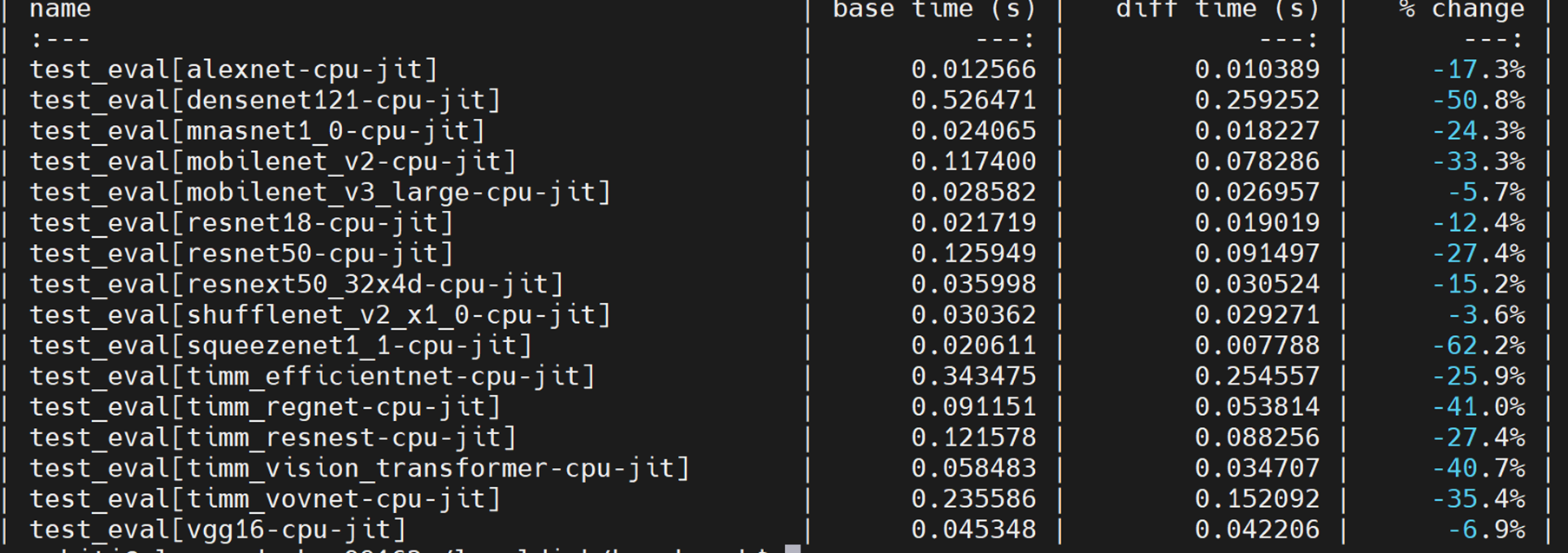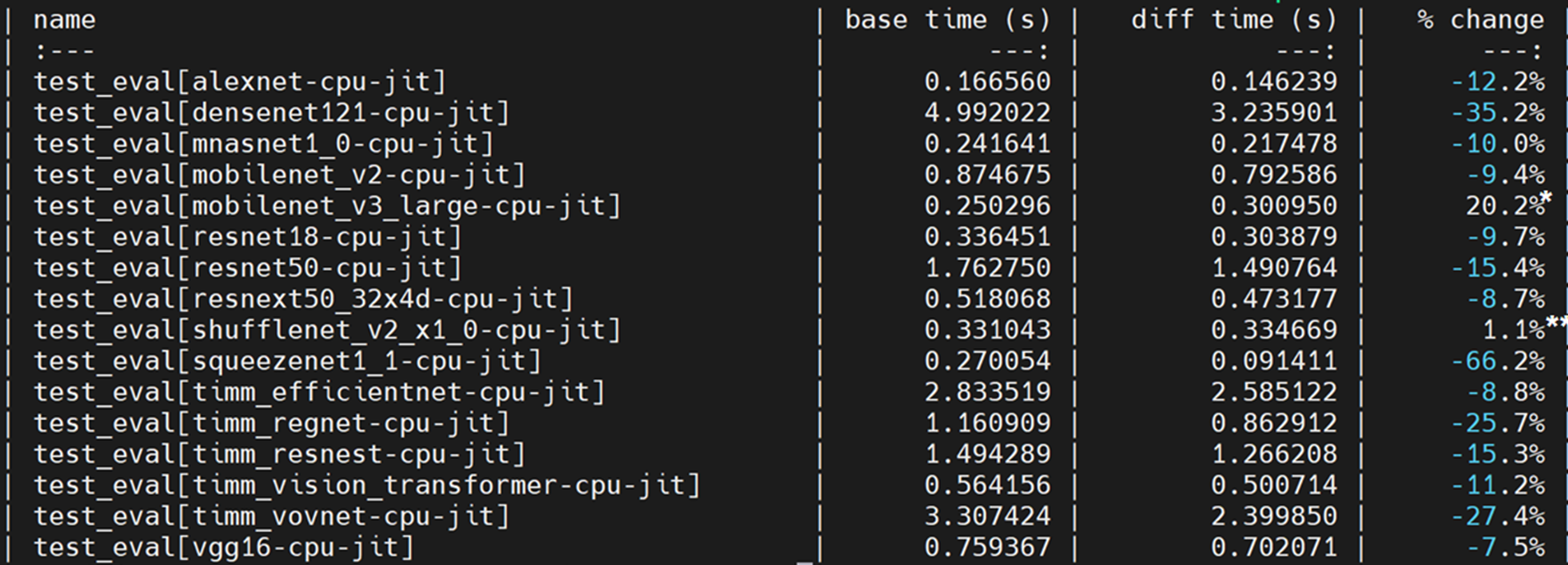Bug:
Previously, `initOutputLayouts()` was called after creating a graph and before merging other nodes. It is a vector with one element. So when a graph contains multiple outputs, e.g. using AOTAutograd compile in my case, layout_propagation pass try to access out of range elements in the vector. Then it comes to the second bug in `useOpaqueLayout()`, the out of range checks the index with the updated output size instead of the size of the vector. Then used `[]` to access the element, which is out of range.
Fixes the above two issues:
1. check the offset is within range with the size of `attr::output_layouts` vector instead of another variable. This check catches the error now.
2. change the place to initial `attr::output_layouts` after node merging. The graph may change with node merging. Thus we moved the initialization in layout_propagation with the complete graph.
Added test time:
`Ran 1 test in 0.383s`
Pull Request resolved: https://github.com/pytorch/pytorch/pull/88496
Approved by: https://github.com/jgong5, https://github.com/sanchitintel
## BFloat16 dtype support for faster inference with TorchScript using oneDNN Graph
Intel Xeon Cooper Lake platform & beyond support the `AVX512_BF16` ISA, which is essentially native BFloat16 support.
oneDNN Graph delivers high inference performance with BFloat16 on such machines.
While oneDNN Graph can still be used with BFloat16 on older machines that lack `avx512_bf16` ISA but support `avx512bw`, `avx512vl` & `avx512dq` ISAs, the BF16 performance on these older machines will be significantly poorer (probably even poorer than Float32), as they lack native BF16 support.
Currently, [AMP support for eager mode & JIT mode is divergent in PyTorch](https://github.com/pytorch/pytorch/issues/75956).
So, for using oneDNN Graph with BFloat16, eager-mode AMP should be leveraged by turning off AMP for JIT mode, using `torch._C._jit_set_autocast_mode(False)` in python code, so as to avoid conflicts.
Please use the following environment variable to view JIT logs -
`PYTORCH_JIT_LOG_LEVEL=">>graph_helper:>>graph_fuser:>>kernel:>>interface"`
## Changes being made in this PR
1. This PR does NOT change the `oneDNN` commit or the `ideep` files. While the `ideep` commit is being updated, only files pertaining to oneDNN Graph are being updated. oneDNN Graph is being upgraded to version 0.5.2 (alpha patch release 2).
To put things into perspective, `ideep` is a git submodule of PyTorch. `oneDNN Graph` is a git submodule of `ideep` (`ideep/mkl-dnn`), and oneDNN is a git submodule of oneDNN Graph (`ideep/mkl-dnn/third_party/oneDNN`).
2. Unit-tests are being updated. We now use the [existing dtypes decorator](https://github.com/pytorch/pytorch/blob/master/torch/testing/_internal/common_device_type.py#L123-L131).
3. Suggestions made by @eellison in the [FP32 PR](https://github.com/pytorch/pytorch/pull/68111#pullrequestreview-896719477) are being incorporated/addressed -
| Action-item | Status |
| :--- | ---: |
|checkInputCompatibility follow up | Fixed |
|the mayConvertScalarInputToTensor logic we can consider | Added type promotion code |
|fix up fixConvOptionalBias| The current approach seems correct |
|Use opinfo tests| using dtypes decorator. Will use `OpInfo` in a subsequent PR, if that'd be possible. Should we create a list of ops from opDB that are supported by oneDNN Graph, and add it to `common_methods_invocations.py`? |
|inferDevice torch_check call | not necessary now, perhaps, as only CPU is supported, for now? We'd add it by the beta release of oneDNN Graph, though, so that by then, users might be able to use other fusers with oneDNN Graph (NNC/TensorExpr are already compatible with the oneDNN Graph fuser). We can still add it, if you'd insist. |
|not checking shapes of input mkldnn tensor to llga guard | Those checks should not be present because oneDNN Graph may use blocked or channels-last layout, so those strides would be different. They're only skipped if an LLGA subgraph's output is input to another LLGA subgraph, which enables LLGA to choose an optimal layout between them. |
|fix test failures with respect to unsupported inputs | We'll address them with the upcoming release of oneDNN Graph beta version|
4. More PyTorch ops are being been mapped to oneDNN Graph
## Example of using oneDNN Graph with BFloat16
```python
# Assuming we have a model of the name 'model'
example_input = torch.rand(1, 3, 224, 224)
# enable oneDNN Graph
torch.jit.enable_onednn_fusion(True)
# Disable AMP for JIT
torch._C._jit_set_autocast_mode(False)
with torch.no_grad(), torch.cpu.amp.autocast():
model = torch.jit.trace(model, (example_input))
model = torch.jit.freeze(model)
# 2 warm-ups (2 for tracing/scripting with an example, 3 without an example)
model(example_input)
model(example_input)
# speedup would be observed in subsequent runs.
model(example_input)
```
## TorchBench based Benchmarks
**URL:** https://github.com/sanchitintel/benchmark/tree/onednn_graph_benchmark (instructions present at URL).
**Batch-size(s):** TorchBench-default for each model
**Baseline :** PyTorch JIT OFI FP32
**Machine:** Intel(R) Xeon(R) Platinum 8371HC (Cooper Lake)
**Sockets used**: 1
**Number of cores on one socket**: 26
Intel OpenMP & tcmalloc were preloaded
#### Benchmark results with single thread
| name | latency of PyTorch JIT OFI FP32 (s) | Latency of oneDNN Graph BF16 (s) | % change |
| :--- | ---: | ---: | ---: |
| test_eval[alexnet-cpu-jit] | 1.063851 | 0.509820 | -52.1% |
| test_eval[mnasnet1_0-cpu-jit] | 0.218435 | 0.107100 | -51.0% |
| test_eval[mobilenet_v2-cpu-jit] | 0.114467 | 0.058359 | -49.0% |
| test_eval[mobilenet_v3_large-cpu-jit] | 0.233873 | 0.117614 | -49.7% |
| test_eval[resnet18-cpu-jit] | 0.160584 | 0.075854 | -52.8% |
| test_eval[resnet50-cpu-jit] | 1.652846 | 0.713373 | -56.8% |
| test_eval[resnext50_32x4d-cpu-jit] | 0.471174 | 0.209431 | -55.6% |
|test_eval[shufflenet_v2_x1_0-cpu-jit] | 0.310306 | 0.167090 | -46.2% |
| test_eval[squeezenet1_1-cpu-jit] | 0.161247 | 0.045684 | -71.7% |
| test_eval[timm_efficientnet-cpu-jit] | 1.643772 | 0.800099 | -51.3% |
| test_eval[timm_regnet-cpu-jit] | 5.732272 | 2.333417 | -59.3% |
| test_eval[timm_resnest-cpu-jit] | 1.366464 | 0.715252 | -47.7% |
| test_eval[timm_vision_transformer-cpu-jit] | 0.508521 | 0.271598 | -46.6% |
| test_eval[timm_vovnet-cpu-jit] | 2.756692 | 1.125033 | -59.2% |
| test_eval[vgg16-cpu-jit] | 0.711533 | 0.312344 | -56.1% |
#### Benchmark results with 26 threads:
| name | latency of PyTorch JIT OFI FP32 (s) | Latency of oneDNN Graph BF16 (s) | % change |
| :--- | ---: | ---: | ---: |
| test_eval[alexnet-cpu-jit] | 0.062871 | 0.034198 | -45.6% |
| test_eval[mnasnet1_0-cpu-jit] | 0.022490 | 0.008172 | -63.7% |
| test_eval[mobilenet_v2-cpu-jit] | 0.012730 | 0.005866 | -53.9% |
| test_eval[mobilenet_v3_large-cpu-jit] | 0.025948 | 0.010346 | -60.1% |
| test_eval[resnet18-cpu-jit] | 0.011194 | 0.005726 | -48.9% |
| test_eval[resnet50-cpu-jit] | 0.124662 | 0.045599 | -63.4% |
| test_eval[resnext50_32x4d-cpu-jit] | 0.034737 | 0.015214 | -56.2% |
|test_eval[shufflenet_v2_x1_0-cpu-jit] | 0.028820 | 0.012517 | -56.6% |
| test_eval[squeezenet1_1-cpu-jit] | 0.012557 | 0.003876 | -69.1% |
| test_eval[timm_efficientnet-cpu-jit] | 0.203177 | 0.051879 | -74.5% |
| test_eval[timm_regnet-cpu-jit] | 0.452050 | 0.151113 | -66.6% |
| test_eval[timm_resnest-cpu-jit] | 0.117072 | 0.052848 | -54.9% |
| test_eval[timm_vision_transformer-cpu-jit] | 0.046048 | 0.023275 | -49.5% |
| test_eval[timm_vovnet-cpu-jit] | 0.213187 | 0.077482 | -63.7% |
| test_eval[vgg16-cpu-jit] | 0.044726 | 0.021998 | -50.8% |
Pull Request resolved: https://github.com/pytorch/pytorch/pull/85591
Approved by: https://github.com/jgong5, https://github.com/frank-wei, https://github.com/chunyuan-w
### Description
Add oneDNN graph context manager API to be consistent with other fusers.
NNC and nvFuser have two ways to use: 1) a function to enable/disable and 2) a context manager. And the later way is used extensively in libraries like Dynamo. Currently oneDNN Graph fuser only has the former way. To promote the usage of oneDNN graph fuser, this PR creates the context manager for oneDNN graph fuser.
This PR should not affect any performance.
### Testing
A unit-test `test_context_manager` is added under `test/test_jit_llga_fuser.py`
Pull Request resolved: https://github.com/pytorch/pytorch/pull/82491
Approved by: https://github.com/malfet
Re-landing #68111/#74596
## Description
v0.5 PR of this [RFC](https://github.com/pytorch/pytorch/issues/49444).
On the basis of #50256, the below improvements are included:
* The [v0.5 release branch](https://github.com/oneapi-src/oneDNN/releases/tag/graph-v0.5) of the oneDNN Graph API is used
* The fuser now works with the profiling graph executor. We have inserted type check nodes to guard the profiled tensor properties.
### User API:
The optimization pass is disabled by default. Users could enable it by:
```
torch.jit.enable_onednn_fusion(True)
```
`torch.jit.freeze` should be used after tracing (recommended) or scripting a model.
### Performance:
[pytorch/benchmark](https://github.com/pytorch/benchmark) tool is used to compare the performance:
* SkyLake 8180 (1 socket of 28 cores):

* SkyLake 8180 (single thread):

* By mapping hardswish to oneDNN Graph, it’s 8% faster than PyTorch JIT (NNC + OFI)
** We expect performance gain after mapping transpose, contiguous & view to oneDNN graph ops
### Directory structure of the integration code
Fuser-related code is placed under:
```
torch/csrc/jit/codegen/onednn/
```
Optimization pass registration is done in:
```
torch/csrc/jit/passes/onednn_graph_fuser.h
```
CMake for the integration code is in:
```
caffe2/CMakeLists.txt
cmake/public/mkldnn.cmake
cmake/Modules/FindMKLDNN.cmake
```
## Limitations
* In this PR, we only support Pytorch-oneDNN-Graph integration on Linux platform. Support on Windows and MacOS will be enabled as a next step.
* We have only optimized the inference use-case.
Pull Request resolved: https://github.com/pytorch/pytorch/pull/76622
Approved by: https://github.com/eellison
Summary:
## Description
Preview4 PR of this [RFC](https://github.com/pytorch/pytorch/issues/49444).
On the basis of https://github.com/pytorch/pytorch/pull/50256, the below improvements are included:
- The [preview4 release branch](https://github.com/oneapi-src/oneDNN/releases/tag/graph-v0.4.1) of the oneDNN Graph API is used
- The fuser now works with the profiling graph executor. We have inserted type check nodes to guard the profiled tensor properties.
### User API:
The optimization pass is disabled by default. Users could enable it by:
```
torch.jit.enable_onednn_fusion(True)
```
### Performance:
[pytorch/benchmark](https://github.com/pytorch/benchmark) tool is used to compare the performance:
- SkyLake 8180 (1 socket of 28 cores):

- SkyLake 8180 (single thread):

\* By mapping hardswish to oneDNN Graph, it’s 8% faster than PyTorch JIT (NNC + OFI)
\** We expect performance gain after mapping transpose, contiguous & view to oneDNN graph ops
### Directory structure of the integration code
Fuser-related code are placed under:
```
torch/csrc/jit/codegen/onednn/
```
Optimization pass registration is done in:
```
torch/csrc/jit/passes/onednn_graph_fuser.h
```
CMake for the integration code is:
```
caffe2/CMakeLists.txt
```
## Limitations
- In this PR, we have only supported the optimization on Linux platform. The support on Windows and MacOS will be enabled as the next step.
- We have only optimized the inference use case.
Pull Request resolved: https://github.com/pytorch/pytorch/pull/68111
Reviewed By: eellison
Differential Revision: D34584878
Pulled By: malfet
fbshipit-source-id: ce817aa8cc9052ee9ed930c9cf66be83449e61a4
(cherry picked from commit cd17683aa7d9c0947df45a1ab53627feff795587)